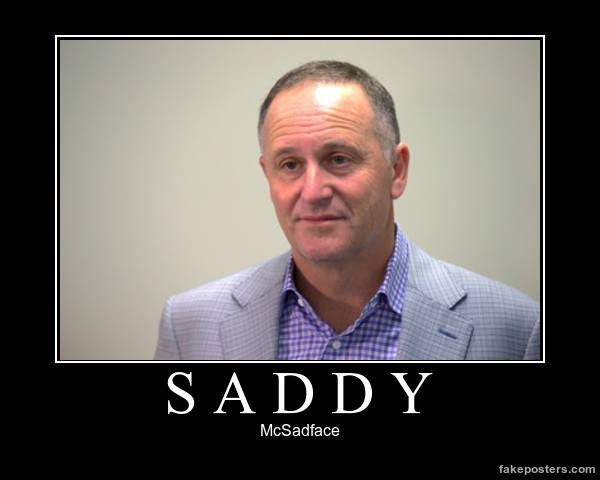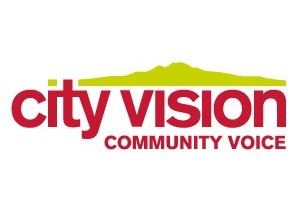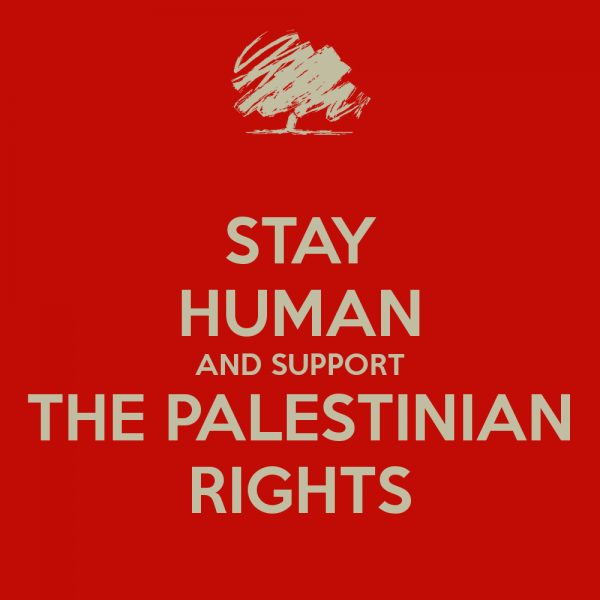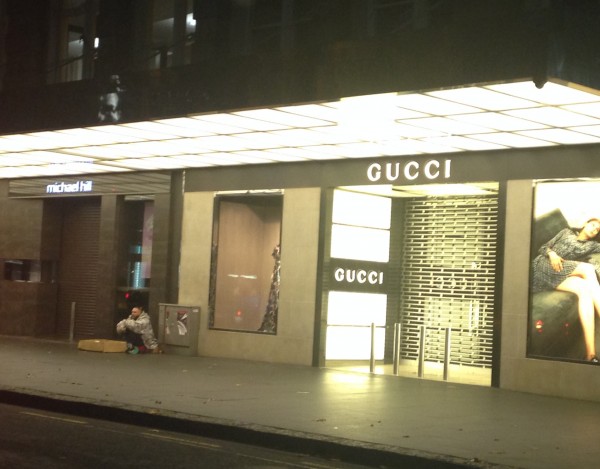Announce protest actions, general chit chat or give your opinion on issues we haven’t covered for the day.
Moderation rules are more lenient for this section, but try and play nicely.

What’s been revealed today by David Fisher is truly extraordinary…
John Key’s secret flag donor luncheon
Prime Minister John Key was the star guest at a private fundraising lunch for the Change the Flag lobby group in a last-ditch bid to raise cash from wealthy Chinese donors who supported a flag change.
The exclusive meeting with no more than six donors took place in a private room of an Auckland Chinese restaurant. Other guests included National Party president Peter Goodfellow, Cabinet minister Nikki Kaye and National MP Dr Jian Yang.
Funds raised at the February 18 lunch allowed the lobby group to fund a last-minute push for votes, including a pamphlet to 500,000 homes just days before voting started on March 3.
After all the mainstream media pundits claimed Key was not hurt politically by the loss of his vanity project.
After Key pretended he didn’t care and tried to claim it wasn’t his vanity project.
After Key was beaten, we now find out that Key WAS involved heavily with the flag change and that his secret meeting with Chinese donors was to get the money to fund a last minute 500 000 pamphlet drop.
This is outrageous.
Key’s lied about how involved he was in the flag project.
Key’s meeting Chinese donors in secret to make decisions about our flag that have not been made public. The Chinese may well hate the Union Jack, but trying to influence what happens on New Zealand’s flag is interference in our domestic affairs.
This latest outbreak of political pus comes in the wake of the smell of infection that has surrounded NZ from the Panama Papers. We have become a Tax Haven generating money for Lawyers and allowing organised crime and the wealthy elites avoid scrutiny. All of this has erupted under Key’s watch despite being specifically warned several times over several years that he was trading our reputation for the benefit of the 1%.
A lot of people seemed to think Kim Dotcom was trying to buy an election in 2014 and turned against him for that. Kim wasn’t trying to buy an election, he was a rich man wronged and he wanted to hurt Key. Using personal appearances to fund a political pet project that would rebrand our entire country using money from rich foreign interests is however the very power of wealth that buys elections.
I don’t think this latest evidence of abuse of political power by Key will be so easily shrugged off.
It’s not because it’s the most compelling evidence of his abuses of power. The mass surveillance lies, the Dirty Politics scandal, the ramming through of Parliament laws he wants all of these and so many more are stronger evidence, but this people can grasp.
People loved their flag, and knowing Key met to secretly fund a campaign to get rid of it even in the last dying moments of the campaign will insult many and nothing moves polls like a voter scorned.

The fourth AAAP beneficiary ‘impact’ at Mangere is now over.
In three days over a hundred AAAP volunteers worked with a team of more than 30 Work & Income staff to assist somewhere between 600 – 700 people get their full entitlements.
Many hundreds more people in desperate need were turned away. Video is available here:
‘Even the most experienced of us are devastated by the scale of poverty and desperation we’ve seen this week, and by the inability of both our own people and MSD to meet the needs of those who came for help,’ says AAAP spokesperson Sue Bradford.
‘It is clear that things have become much worse for a lot more people than when we organised our last impact at Mangere in August 2014, a year and a half ago.
‘The New Zealand we’ve been seeing this week is much more akin to what we’d expect in a developing country than in a comparatively well off society like ours.
‘Families walked for miles with babies in their arms to get help. One large family drove all the way from Whangarei simply to get a food grant. Sadly, the latter were among the hundreds turned away.
‘It is a true indictment of our welfare system that people are unable to get simple things like food grants from their local Work & Income office when they manifestly need them, and are entitled to them.
‘It is also a disgrace that successive National and Labour-led governments have refused to restore benefit levels to their pre-1991 equivalents.
‘Much of the poverty we’re seeing this week is because of massive debts to both Work & Income and to private lenders, brought about because people never have enough money to live on from one week to the next.
‘We’re also seeing a lot more people who are caught between part time, casual and temporary low paid work and the benefit system.
‘AAAP continues to be shocked by the indifference of government and others to the plight of unemployed people, beneficiaries and precarious workers.
‘Our current welfare legislation and Work & Income culture needs a total overhaul, alongside a serious government commitment to decent jobs, adequate housing and affordable education for all.’
The answer is the exported profits of transnational corporations.
Proving that foreign “investment” actually sucks out more money out of New Zealand than it puts in.
Here is the relevant extract from CAFCA’s newly updated Key Facts.
http://canterbury.cyberplace.org.nz/community/CAFCA/blueball.gifTransnational corporations (TNCs) make massive profits out of New Zealand. These can truly be called New Zealand’s biggest invisible export. In the year to March 2015, they were $9.0 billion. Over the last decade they have averaged more than the combined exports of seafood and milk powder. In the decade 2006-2015, TNCs made $77.5 billion in profits from New Zealand, an average rate of profit after tax on their shareholdings of 12.5% (12.0% in the year to March 2015). Only 26% was reinvested (only 15% in the year to March 2015). Profits have averaged twice the increase in foreign direct investment holdings each year.
http://canterbury.cyberplace.org.nz/community/CAFCA/blueball.gif Another $7.9 billion left New Zealand in the year to March 2015 made up of investment income from debt and smaller shareholdings (portfolio investment), making a total $16.9 billion. Over the last decade this has averaged more than the combined dairy and forest product exports. More than two out of every five dollars of the $16.9 billion went to the owners of New Zealand’s banking sector: $6.9 billion. The investment income from overseas ownership of the banking sector (“Deposit taking corporations”) after taking account of its small investment income from abroad, accounted for four out of every five dollars of New Zealand’s current account deficit in the year to March 2015: $6.5 billion compared to $8.1 billion. The investment income deficit (income on New Zealand investment overseas less income on foreign investment in New Zealand) has been greater than the current account deficit for all but two years since 1989, which further increases New Zealand’s foreign liabilities.
The full Key Facts complete with sources (meticulously researched and compiled by CAFCA’s Bill Rosenberg), can be read at http://canterbury.cyberplace.co.nz/community/CAFCA/key-facts.html

Silhouettes representing 642 missing Auckland public health workers will be put up outside Auckland City Hospital today. (Park Road entrance from 930am – 2pm with interviews with health workers from 12 noon.)
The number is based on the latest figures from Auckland’s three District Health Boards.
173 doctors, 100 nursing, 220 allied health, 63 support staff and 86 admininstration and management staff were planned for but not employed in the first seven months of the current financial year.
Mental health worker and Public Service Association staff representative Andy Colwell says he hopes the cut-outs show the public how bad understaffing and overwork has become.
“642 missing health workers in seven months is appalling, but it doesn’t even scratch the surface,” he says.
“These figures don’t even include understaffing for the past six years due to the Government’s $1.7 billion in underfunding.”
Mr Colwell says health workers are working harder, longer and often for free because they are so understaffed.
“We often work when we are sick and don’t take holidays because there aren’t enough staff to cover for us and we are exhausted,” he says.
Mr Colwell says he isn’t surprised allied health is the largest under-staffed group in Auckland in this year’s budget but was surprised 92% of all the country’s under-staffing was in Auckland.

“It is increasingly difficult to avoid the conclusion that the Government is returning to the market approach to health that was tried and failed in the 1990s,” says Ian Powell, Executive Director of the Association of Salaried Medical Specialists (ASMS).
“Back then, public hospitals were turned into state-owned companies governed by competition law, and were expected to compete with each other and with the private sector. The consequences of this were disastrous for the health sector, setting workforce planning back a number of years, eroding the culture that health professionals worked in, and prioritising short-term decision-making over more sustainable longer-term thinking.
“For some reason, the Government appears to be looking fondly back at those times and trying to drag the health sector back into the 1990s.”
Mr Powell discusses this “return of the Empire by stealth” further in an article in the latest issue of the ASMS magazine, The Specialist.
In the article, he notes the Ministry of Health’s restructure and points to an increased emphasis on market mechanisms such as tendering through commissioning, and the language of the market – clients and customers. He also comments on the Government’s health funding reviews, which he says clearly point to a competitive model of health service provision.
“Proposals currently being considered by the Government include opening up DHB services to competitive tendering, with indications that funding will be dispensed only if planned milestones are achieved. If they are not, then funding will go to another public or private provider.”
He says the changes being planned, apparently behind the scenes, seem to be about creating a structure more suitable for market mechanisms.
“It’s not about providing the best care for patients and a decent clinically-led working environment for people employed by DHBs. It’s about awarding contracts to the lowest bidder.”

City Vision has selected a strong team of experienced elected representatives and new, diverse talent to contest the seven seats on the Waitematā Local Board, covering Auckland’s city centre and central suburbs.
“With candidates including three Local Board members, a former Councillor, a young social entrepreneur, a teacher, and a media professional, we are confident we have a strong, broad-based, progressive team to advance the interests of our Waitematā communities” says current Local Board Chair and City Vision candidate, Shale Chambers.
Our talented City Vision candidates for the Waitematā Local Board are as follows:
– Shale Chambers, current Chair of the Waitematā Local Board and Ponsonby lawyer
– Adriana Christie, social entrepreneur and young environmentalist
– Pippa Coom, current Deputy Chair of the Waitematā Local Board
– Chang Hung, media personality
– Richard Northey, former Auckland Councillor
– Kurt Taogaga, teacher and community volunteer
– Vernon Tava, current Waitematā Local Board member and business broker
“Our candidates are grounded in the local community and will stand up for the things that matter to local people: transport and housing choice, care for our environment and heritage, keeping assets in public ownership and making Council work effectively through strong community engagement.”
“Our candidates will be working hard from now right through to the local government election in October to listen to our communities and win their support. Our communities deserve a strong community voice”, says Shale Chambers.
The national government’s bill to establish a massive sanctuary around the Kermadec Islands passed its first reading unanimously last month.
The Kermadec Ocean Sanctuary is a significant global commitment to protecting the ocean environment with 6 million birds, 35 species of whale and dolphins, three species of turtle and 150 species of fish.
Te Ohu Kaimoana, the Maori fisheries body has launched legal action against the government’s saying it “rides roughshod” over iwi interests.
Here to discuss the issue with me in studio from the Far North, former MP and Leader of the Mana Party Hone Harawira……….in Kaitaia the Chariman of the Ngati Kuri Board Harry Burkhardt…….in Wellington Green Party Environment Spokesprson Eugenie Sage and Labour Party MP for Te Tai Tonga and Fisheries Spokesperson Rino Tirikatene.

It’s been famously said that “politics and sport don’t mix”, but the fact is they mix all the time. Likewise, political activism and sport have a rich history of association. In most cases, activism takes the form of protest against a sporting event happening. It’s far more unusual for a sport to be used as a proactive political act. The Palestine Marathon is one such event; here the activists are not on the sidelines, they are the runners themselves. The protest is not about preventing something from happening, but about refusing to be denied that most basic of human rights – the right to move around.
The fourth Palestine Marathon took place in Bethlehem last Friday and I was lucky enough to be among the 4,300 participants running a 10km, a full marathon or a half-marathon in my case. The event is organised by the Palestine Olympic Committee and a group called Right to Movement, which takes its name from article 13 of the Universal Declaration of Human Rights; a right that was denied to hundreds of thousands of Palestinians in 1948, the same year as the declaration was adopted, and remains denied to millions of Palestinians today.
Countless restrictions are placed on Palestinians’ ability to move freely. They range from the annoying (denial of the use of certain roads) to the dehumanizing (daily interrogations when crossing checkpoints) to the life threatening (emergency patients unable to reach hospitals). One example that is on my mind at the moment is of a colleague who has just given birth to twins, one of whom is in the ICU. Her husband (the twins’ father) has yet to visit them because they live on the other side of the security wall to the hospital and he doesn’t hold the requisite permit. Heartbreaking.
Yes, the infamous wall is Palestine’s main movement challenge and it features large in the marathon course. Despite being one of those small chunks of Palestine that is officially under full control of the Palestinian Authority (as opposed to being run under Israeli military law), Bethlehem is not that easy to move around in. It is, however, by far the most fascinating race course I’ve ever run. It starts outside the Church of the Nativity, the supposed birthplace of Christ, and takes in a few kilometres of urban Bethlehem before hitting the infamous security wall at Bethlehem’s main entrance. After following the zig-zagging wall for a few kilometres (past such local features as Banksy’s famous wall-art, two refugee camps, and a surprised flock of sheep who obviously hadn’t heard there was a marathon on that day), you then cut across town before hitting the wall again, just 11 kilometres from where you started.
Technically speaking, an official marathon course should not loop back on itself at any point, but the encircling wall makes this pretty much impossible in Bethlehem, so the full marathon runners have to run to the furthest point and back twice in order to cover 42km. The contrast with the Jerusalem Marathon held two weeks’ earlier, where a single-loop marathon is easily organized by incorporating parts of illegally occupied East Jerusalem, could not be starker or more ironic.
It was great fun. The sun shone on a cool April morning as young and old runners, walkers and wheelchair riders set off for their various distances; some aiming for personal best times, others more interested in group selfies; some sporting the latest running kit, others wearing head scarves or keffiyahs; some grabbing power drinks as they sped past the refreshment stations, others stopping to enjoy a juicy Palestinian date or even smoke a cigarette.
Sadly, a group of Gazan runners (including Nader al-Masri, a former Olympian and last year’s marathon winner) were denied permits to attend, a cruelty which serves only to underline the purpose of the event. The absence of Gazans was, in part, compensated by a large contingent of foreign runners – Scandinavians featured prominently, but I also spotted several running groups from South America, one from Afghanistan, a group of guys from Northern Ireland’s Derry and even a few Israeli runners. T-shirts, songs and Facebook posts all making it clear that this wasn’t just a run for fitness, fun or record-beating times, but an act of solidarity with the Palestinian people and all others whose right to movement is stifled by political oppression.
Photos of the event are worth checking out here.

Here we go again.
Another privatisation of a State Asset to prop up charter schools, irrigation for failed dairy intensification and the barest infrastructure investment possible.
This time it’s KiwiBank, last time it was Meridian, Genesis and Mighty River Power. ACC and NZ Super fund buying this chunk of KiwiBank does little to reinvest in KiwiBank’s strengths and sets it up for tender.
We have KiwiBank not JUST because it provides competition for the bastard privacy-abusing-nark-for-the-cops Australian Banks, we have KiwiBank because it is impossible to operate in civil society without a bank account. Why the Sweet Zombie Jesus would we want to monopolise that necessity to Australia?
Billions being sucked out of the NZ economy every year would be the outcome of privatising KiwiBank to foreign interests.
Once again Key is casually hocking off our public assets to raise funds because he has lowered the tax rates and is borrowing billions for tax cuts to the richest. In light of NZ now being a tax haven caused by Key doing nothing on foreign trusts despite warnings, flogging another bit of the country’s asset base off should have the nation in an uproar.
Key says this isn’t privatisation by stealth, but then again he also claims NZ is NOT a tax haven for the rich despite NZ being mentioned 60,000 times in the Mossack Fonseca Panama Papers.
The Emperor isn’t just naked, he’s barefaced.

On the third and final day of AAAP’s beneficiary impact at Mangere organisers were stunned by the size and desperation of the crowd waiting for our help this morning.
“When we arrived around 7am we discovered hundreds outside. People had been here overnight, sleeping in cars and on the street,” says AAAP spokesperson Sue Bradford.
“Because of limits on how many people Work & Income can see in one day (around 250) we were forced to start sending people away from very early on, including a large family who had driven all the way from Whangarei to get a food grant and others with babies in their arms who had walked for miles to get here.
“It is shocking that in a comparatively well off country people are reduced to these levels of despair and need.
“It is atrocious that local Work & Income offices won’t provide food grants and other benefits as a matter of course to people who clearly fit criteria for assistance.
“All of us at AAAP are deeply saddened by having to turn away so many hundreds of people.
“This is a result of policy and culture imposed from the Cabinet on down aimed at keeping as many people on the minimum support possible.
“I wish that Anne Tolley and John Key could be here this morning to see the true face of what their welfare and housing policies are inflicting on so many people.
“AAAP calls for a complete overhaul of New Zealand’s social security system so that people receive enough to live on and get their full entitlements from Work & Income as a matter of course.
“In the long run we need a progressive UBI (Universal Basic Income) and a government commitment to decent jobs, adequate housing and affordable education for all.
“We are here at Mangere until later this afternoon: Pukapuka Community Centre, 24 Canning Cresc, Mangere, next door to the Mangere Work & Income office.”

Nothing sums NZ up better than beggars outside luxury stores on Queen Street
We are obliged to see the beggars on our streets.
Forcing them from sight is more immoral than giving them money.
As we rush around in our day we should be forced to acknowledge that for many of our most vulnerable, there is a totally different type of reality.
Underfunded mental health services, housing services and health services collide with a welfare state designed to disqualify and punish and explode onto our streets in a grim way that jars.
Good.
Poverty and desperation is ugly and it should jar us from our wage slavery.
I’ve lived in the inner city for two decades, the homelessness is worse now than it has ever been. I have always bought food, provided clothing, change and a mattress once for those living rough.
There but for the grace of God go I.
Being confronted by the failures of our social services is crucial if middle class voters are to vote for their country over their property portfolio in 2017.